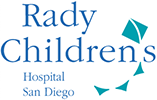What to Do When Babies Cry
Why Do Babies Cry?
All newborns cry and get fussy sometimes. It's normal for a baby to cry for 2–3 hours a day for the first 6 weeks. During the first 3 months of life, they cry more than at any other time.
New parents often are low on sleep and getting used to life with their little one. They'll quickly learn to check to see if their crying baby:
Often, taking care of a baby's needs is enough to soothe a baby. But sometimes, the crying goes on longer.
What Is Colic?
Some babies cry a lot more than others. A baby who cries 3 or more hours a day, 3 or more days a week, for at least 3 weeks might have colic. Usually, it starts when a baby is 2–5 weeks old and ends by the time the baby is 3–4 months old.
Colic happens to a lot of newborns. It's hard to see your baby cry so much, but colic isn't caused by anything a parent did or didn't do. The good news is babies outgrow colic.
What Can Help a Crying Baby?
You can't spoil your baby with too much attention. To soothe a crying baby:
- First, make sure your baby doesn't have a fever. In a baby, a fever is a temperature of 100.4°F (38°C). Call the doctor right away if your baby does have a fever.
- Make sure your baby isn't hungry and has a clean diaper.
- Rock or walk with the baby.
- Sing or talk to your baby.
- Offer the baby a pacifier.
- Take the baby for a ride in a stroller.
- Hold your baby close against your body and take calm, slow breaths.
- Give the baby a warm bath.
- Pat or rub the baby's back.
- Place your baby across your lap on their belly and rub your baby's back.
- Put your baby in a swing or vibrating seat. The motion may be soothing.
- Put your baby in an infant car seat in the back of the car and go for a ride. Often, the vibration and movement of the car are calming.
- Play music — some babies respond to sound as well as movement.
Some babies need less stimulation. Babies 2 months and younger may do well swaddled, lying on their back in the crib with the lights very dim or dark. Make sure the swaddle isn't too tight. Stop swaddling when the baby is starting to be able to roll over.
What Can I Do if a Baby Won't Stop Crying?
If a baby in your care won't stop crying:
- Call a friend or relative for support or to take care of the baby while you take a break.
- If nothing else works, put the baby on their back in an empty crib (without loose blankets or stuffed animals), close the door, and check on the baby in 10 minutes. During that 10 minutes, do something to try to relax and calm down. Try washing your face, breathing deeply, or listening to music.
Call your doctor if nothing seems to be helping the baby, in case there is a medical reason for the fussiness.
No matter what, no one should ever shake a baby for any reason.
If a frustrated or angry caregiver shakes a baby, it can cause shaken baby syndrome (or abusive head trauma), when a child's brain is injured from physical abuse. This can cause permanent brain damage or death. Finding ways to ease a caregiver's stress when a baby is crying can help prevent these injuries.
What Else Should I Know?
The National Center on Shaken Baby Syndrome offers a prevention program, the Period of PURPLE Crying, to help parents and other caregivers understand crying and how to handle it.
All Babies Cry is a program that promotes infant soothing and ways to handle a baby's crying. The program has 4 parts:
- What's normal about crying?
- Comforting your baby.
- Self-care tips for parents.
- Colic and how to cope.
If you're worried you might hurt your baby or someone else will, call the national hotline 1-800-4-A-CHILD (1-800-422-4453) anytime for help.
Tell anyone caring for your baby to never shake the infant. Talk about the dangers of shaking and safe ways to soothe a baby.
Keep in mind that all babies cry a lot and it will get better. The crying isn't caused by something you did or didn't do. Take care of yourself and ask for help so you can keep taking good care of your baby.

© 1995- The Nemours Foundation. KidsHealth® is a registered trademark of The Nemours Foundation. All rights reserved.
Images sourced by The Nemours Foundation and Getty Images.
